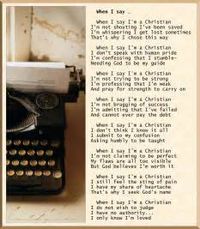Difference between revisions of "Computer"
Whatisreal (Talk | contribs) |
|||
| (3 intermediate revisions by 3 users not shown) | |||
| Line 1: | Line 1: | ||
| − | + | ||
| + | ---- | ||
| + | The system of code relies on an incredibly complex process of [[abstraction]], compression, and encryption. Digital technology runs on code and us humans use digital technology nearly all day, every day, yet code is not broadly understood and is rarely made visible. Instead, it seems as though code is intentionally obscured. In his online-book ''Poetic Computation: Reader'' Taeyoon Choi brings code out of the shadows and discusses it as a form of poetry and aesthetic––an idea with which I myself now identify. I still don't really know what code is and will probably never be able to read it :( , but after reading and viewing some of Choi's work, I am able to see code as both a visual art and as a type of poetry, one that possesses certain "literary" aspects characteristic of "E-Lit." In other words, code is extremely dynamic. | ||
---- | ---- | ||
Choi discusses ''the poetics of code,'' whereby there is something inherently poetic about code itself, as well as the ''poetic effect of code,'' which he defines as an aesthetic experience realized through code. I looked at some of Choi's art, his "code poems" to be specific, and from these works I observed that code has the unique ability to repeat itself just like words in a poem do. One might even say that his code poems contain rhyme schemes, alliterations, enjambments, stanzas, couplets, etc. Here, the equation is simple: code = poetry. | Choi discusses ''the poetics of code,'' whereby there is something inherently poetic about code itself, as well as the ''poetic effect of code,'' which he defines as an aesthetic experience realized through code. I looked at some of Choi's art, his "code poems" to be specific, and from these works I observed that code has the unique ability to repeat itself just like words in a poem do. One might even say that his code poems contain rhyme schemes, alliterations, enjambments, stanzas, couplets, etc. Here, the equation is simple: code = poetry. | ||
| + | |||
| + | [[File:Typewriterpoem.jpg|200px|thumb|right|Typewriter poems as stylistic choice in digital times]] | ||
Latest revision as of 14:16, 6 November 2017
The system of code relies on an incredibly complex process of abstraction, compression, and encryption. Digital technology runs on code and us humans use digital technology nearly all day, every day, yet code is not broadly understood and is rarely made visible. Instead, it seems as though code is intentionally obscured. In his online-book Poetic Computation: Reader Taeyoon Choi brings code out of the shadows and discusses it as a form of poetry and aesthetic––an idea with which I myself now identify. I still don't really know what code is and will probably never be able to read it :( , but after reading and viewing some of Choi's work, I am able to see code as both a visual art and as a type of poetry, one that possesses certain "literary" aspects characteristic of "E-Lit." In other words, code is extremely dynamic.
Choi discusses the poetics of code, whereby there is something inherently poetic about code itself, as well as the poetic effect of code, which he defines as an aesthetic experience realized through code. I looked at some of Choi's art, his "code poems" to be specific, and from these works I observed that code has the unique ability to repeat itself just like words in a poem do. One might even say that his code poems contain rhyme schemes, alliterations, enjambments, stanzas, couplets, etc. Here, the equation is simple: code = poetry.
